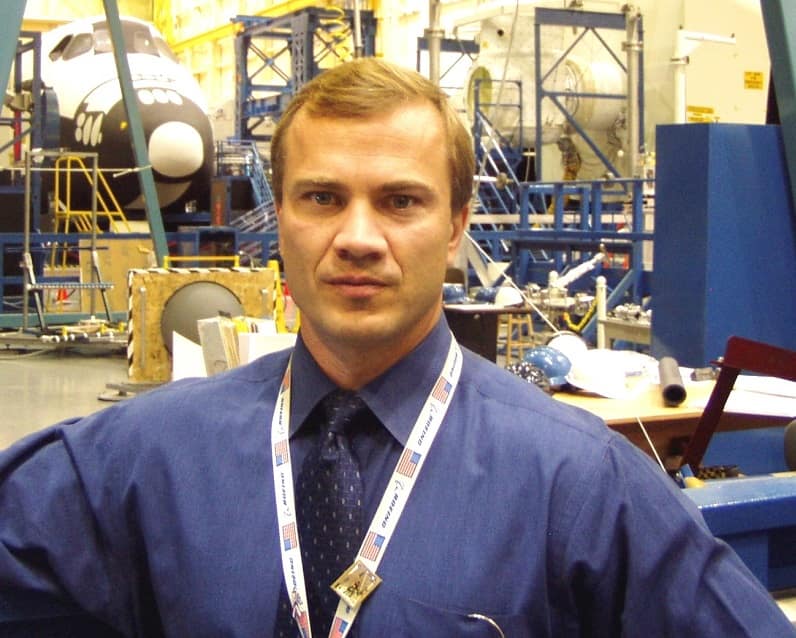Worldwide Professor Publishes Book on Shuttle Missions Post-Columbia

When students at Embry-Riddle Worldwide take a course with Dr. James Peters, who has taught dozens of graduate courses in the areas of Space Operations, Technical Management and Aeronautical Science since 1998, they are getting a vault of knowledge that literally helped to save the space program.
Peters recently published his latest book, “Return to Flight - Inside NASA's Space Shuttle Missions in the Wake of the Columbia Accident,” about the 2003 disaster which saw the craft disintegrate as it re-entered Earth's atmosphere, killing all seven crew members. Peters would serve as the Shuttle Debris Integration Chair for NASA after the incident, a fancy way of saying that he was in charge of helping to make sure a disaster like that never happened again.
You joined NASA 13 months after the Columbia disaster occurred after working as a principal scientist and engineer with Boeing where you already were involved with the shuttle program. Where were they in relation to analyzing the accident when you came on board?
Although I joined after the accident, I was already working with them hand-in-hand as a Boeing employee analyzing what happened, determining the root cause and corrective action, and preparing for return to flight. So when I came on board with NASA, the cause of the accident had already been determined and they were primarily focused on addressing the 15 recommendations given by the Columbia Accident Investigation Report that were deemed necessary for resuming Shuttle Flight Operations.
So how did you wind up as the Shuttle Debris Integration Chair, leading the charge on implementing those recommendations?
During our first return to flight mission (STS-114) we experienced another major foam debris failure and several other debris failures that were of significant concern. Fortunately, foam ramp debris did not strike the orbiter. If the foam had hit the orbiter, it would have caused major damage similar to what we experienced on Columbia. As a result, the shuttle was grounded again.
The debris issues grew more extensive than before STS-114 because we could now see debris liberating from the vehicle from all the cameras and sensors we installed. In addition to foam debris, we could now see debris coming off the orbiter, solid rocket boosters and from the launch pad that we had not seen before.
To address all the new found debris issues, the Shuttle Program formalized the debris position and I became the Shuttle Debris Integration Chair, responsible for overseeing all aspects of debris. The position was the best job I’ve ever had in terms of responsibility, camaraderie, intensity and visibility. NASA -- and the Shuttle Program -- was relying on me and my team for safety-of-flight recommendations.
The team you oversaw was crucial to the future of the space program. What do you see as some of its biggest accomplishments?
The first big accomplishment was safely flying out the remaining 22 missions after the Columbia accident until the Shuttle was retired in 2011. Second, fixing the numerous debris problems to keep the Shuttle flying. Third, developing a comprehensive debris model that could predict risk associated with any debris source. And finally, recognizing many of the great contributions made by the debris team such as the award of four “Silver Snoopies,” which are NASA’s highest award for flight safety. Interestingly enough, our last flight was no doubt the safest shuttle flight we ever flew.
You work now as the risk manager for NASA’s Commercial Crew Program. What do you see as the biggest risks in modern spaceflight?
I think we are still faced with some of the same fundamental risks today with modern spaceflight as we have in the past. It’s a risky business. High energy systems are needed to produce enough thrust to reach orbit. There are millions of pounds of force trying to find the weakest link in the launch vehicle. We still have to survive the re-entry heating and count on our chutes to deploy correctly in order to land safety.
Even with all this, the biggest challenge is keeping humans alive in the space environment. The longer the mission duration, the bigger the challenge. What has changed is the improved technology in avionics, propulsion, batteries, guidance systems and life support systems. These technologies help improve performance and to a certain extent help reduce risk.
Where do you see the future of spaceflight headed?
From my perspective, more commercialization of space using partnerships along with NASA’s expertise and funding is the future. The Russians have already “commercialized” in the sense that they have had several “space tourists” pay for seats on the Soyuz to visit the International Space Station (ISS). One of the goals of the Commercial Crew Program is to develop a U.S. capability to fly our astronauts to ISS and allow “spaceflight participants” to purchase a flight.
From a risk perspective, the CCP designs are much different and safer compared to the shuttle. They are capsule designs with launch abort systems. The capsule configuration positioned on top of the launch vehicle eliminates ascent debris, which was the biggest risk on the shuttle. The launch abort system can save the crew if there is a problem during ascent, which is the riskiest part of spaceflight. Looking back, both the Challenger and Columbia disasters could have been prevented with this design configuration.
So how does all of this experience help you to shape how you handle a classroom?
I think my professional experience has helped tremendously in the classroom by providing real-world examples and application of academic principles. My students seem to really respond well to examples and stories, which helps them understand the concepts and make it easier for them to apply the fundamental principles themselves. It also makes the class much more interesting and drives a lot more “teachable moments,” which I think can only enhance the learning experience even more.
